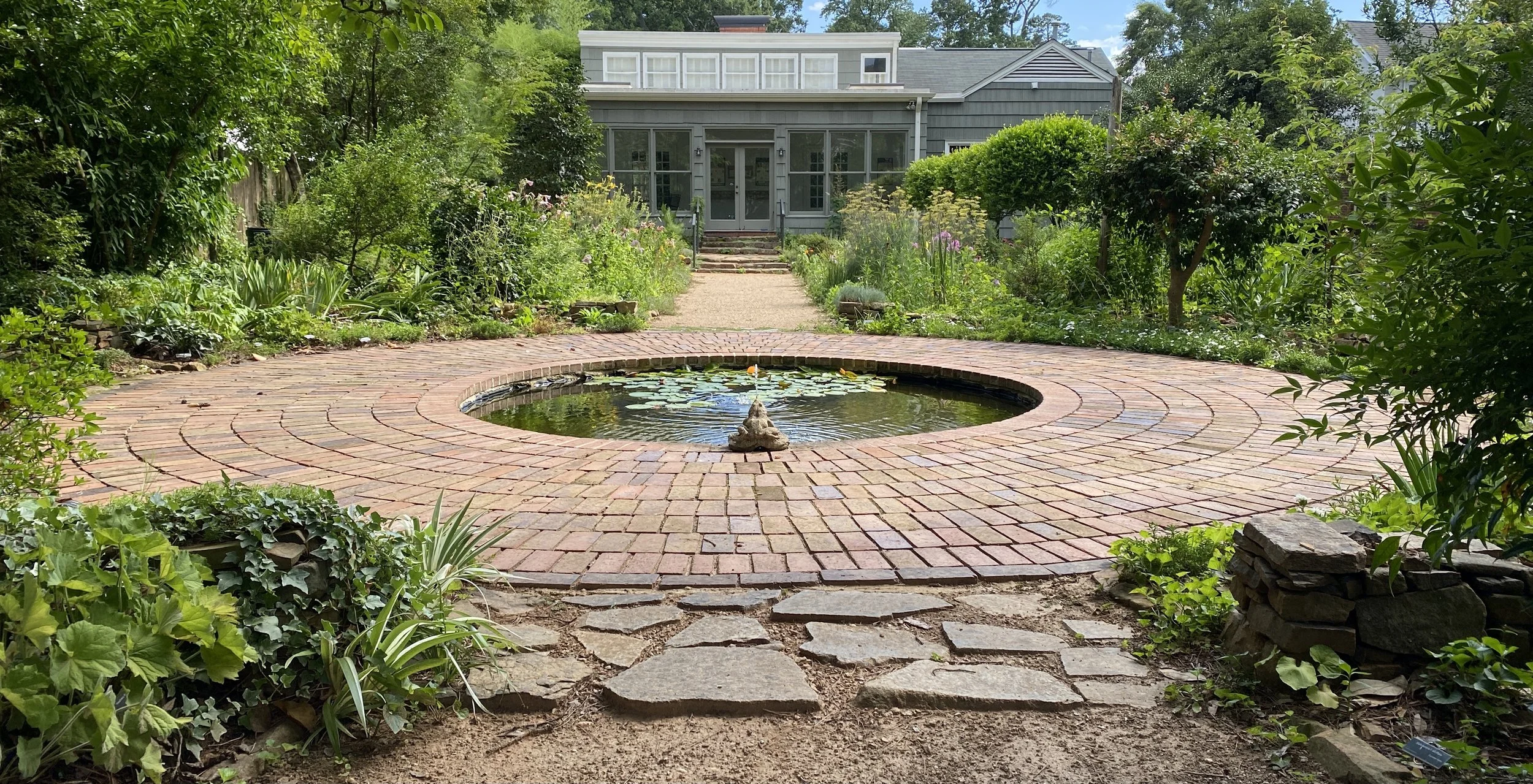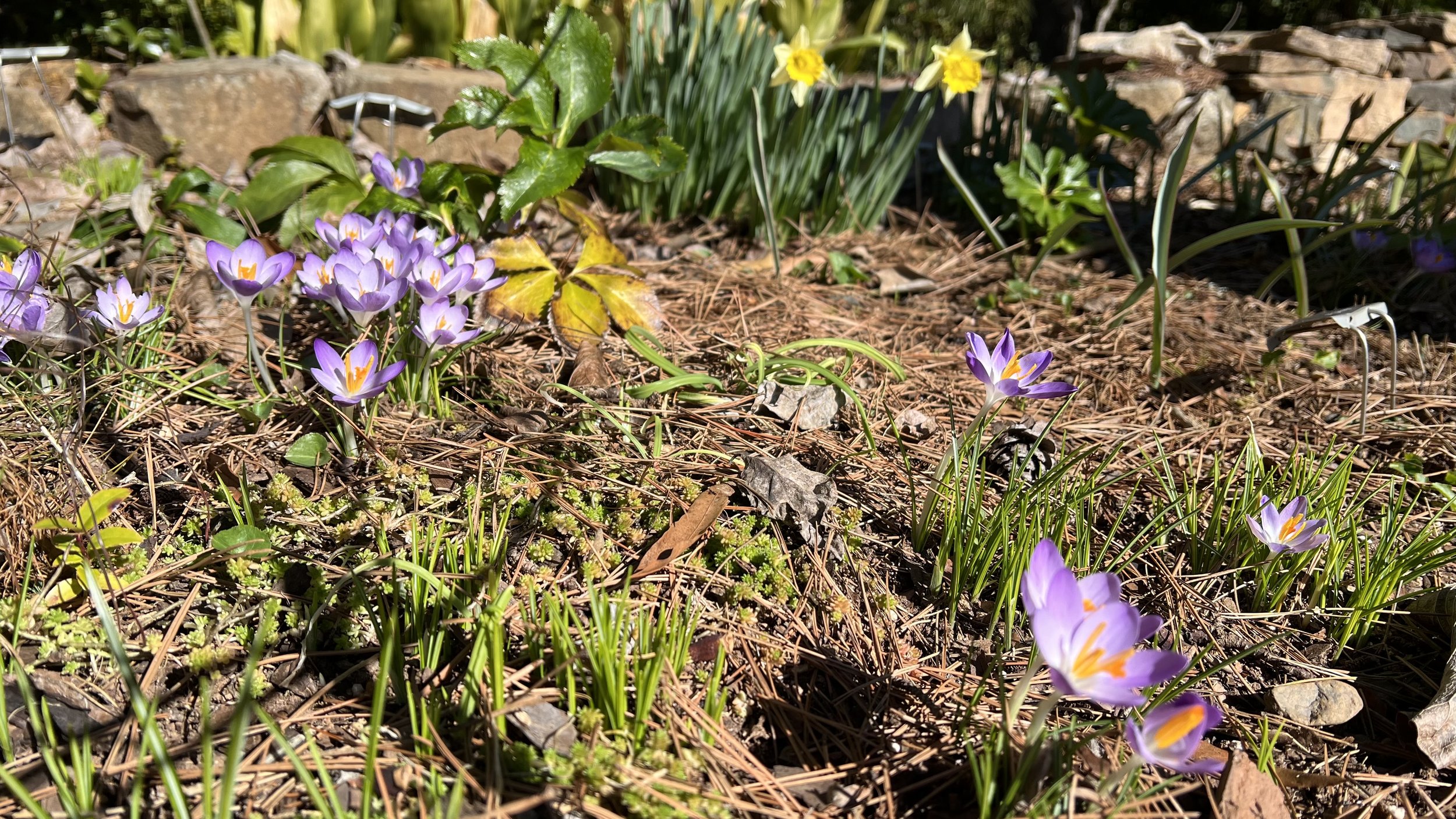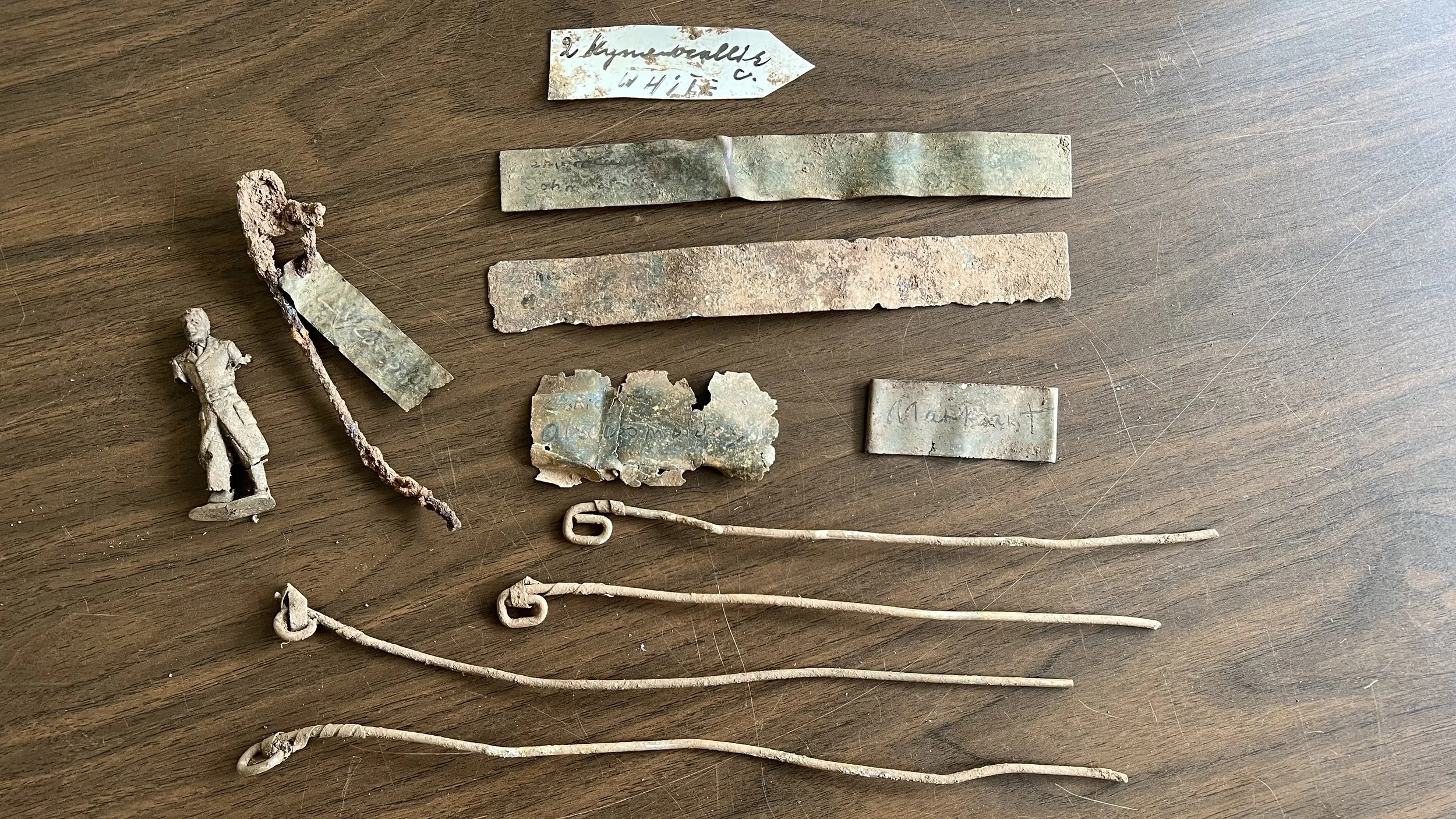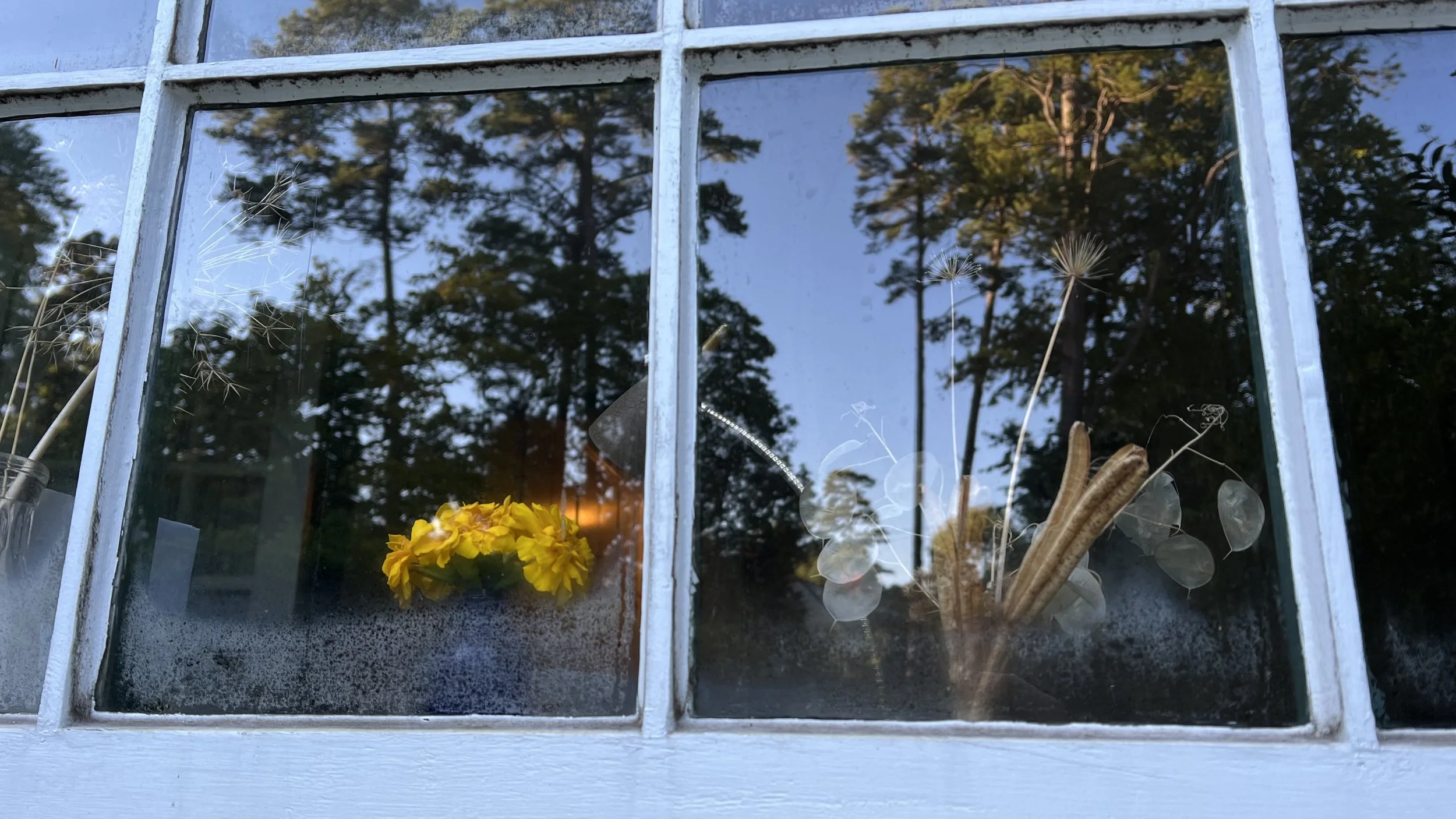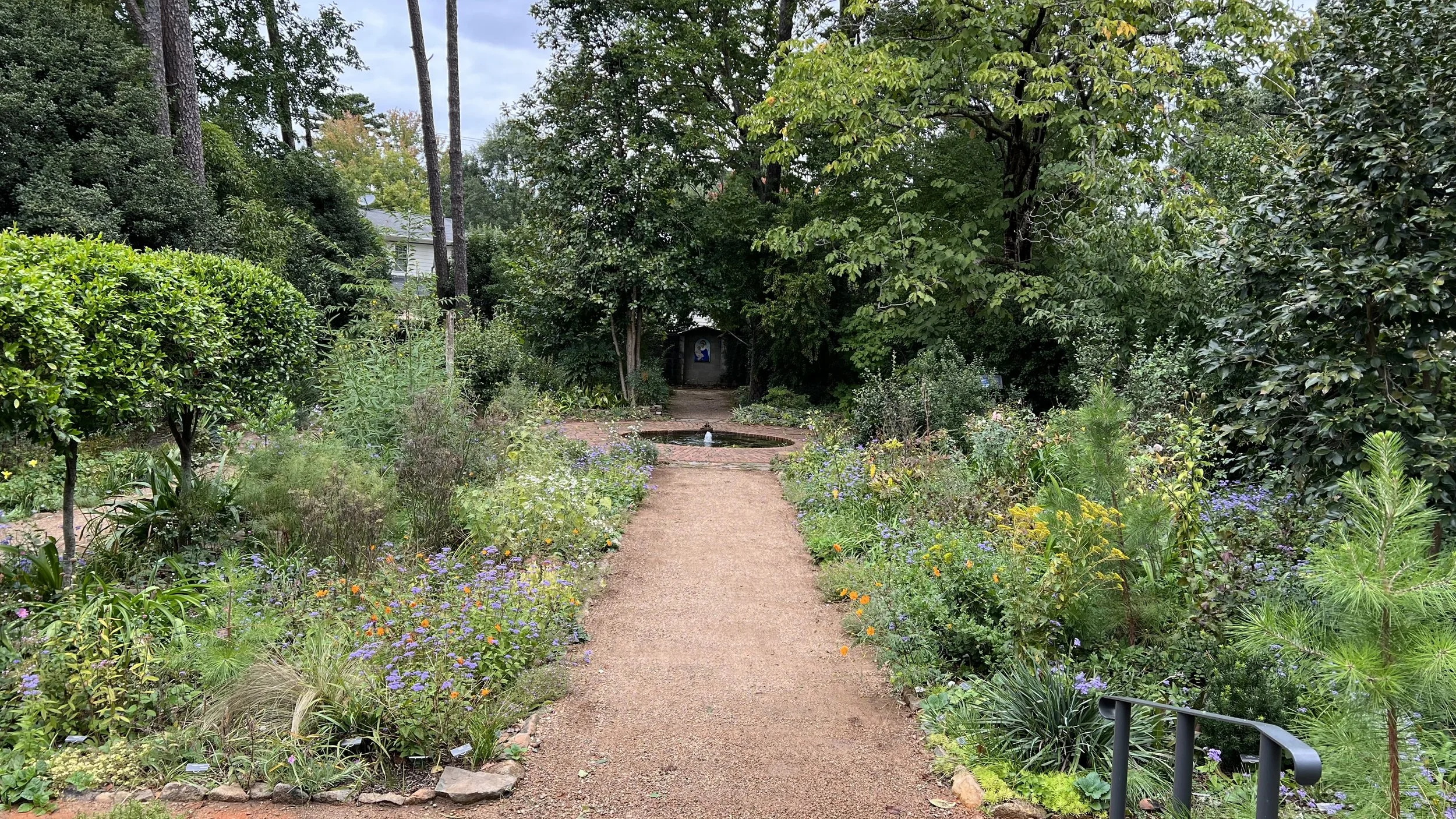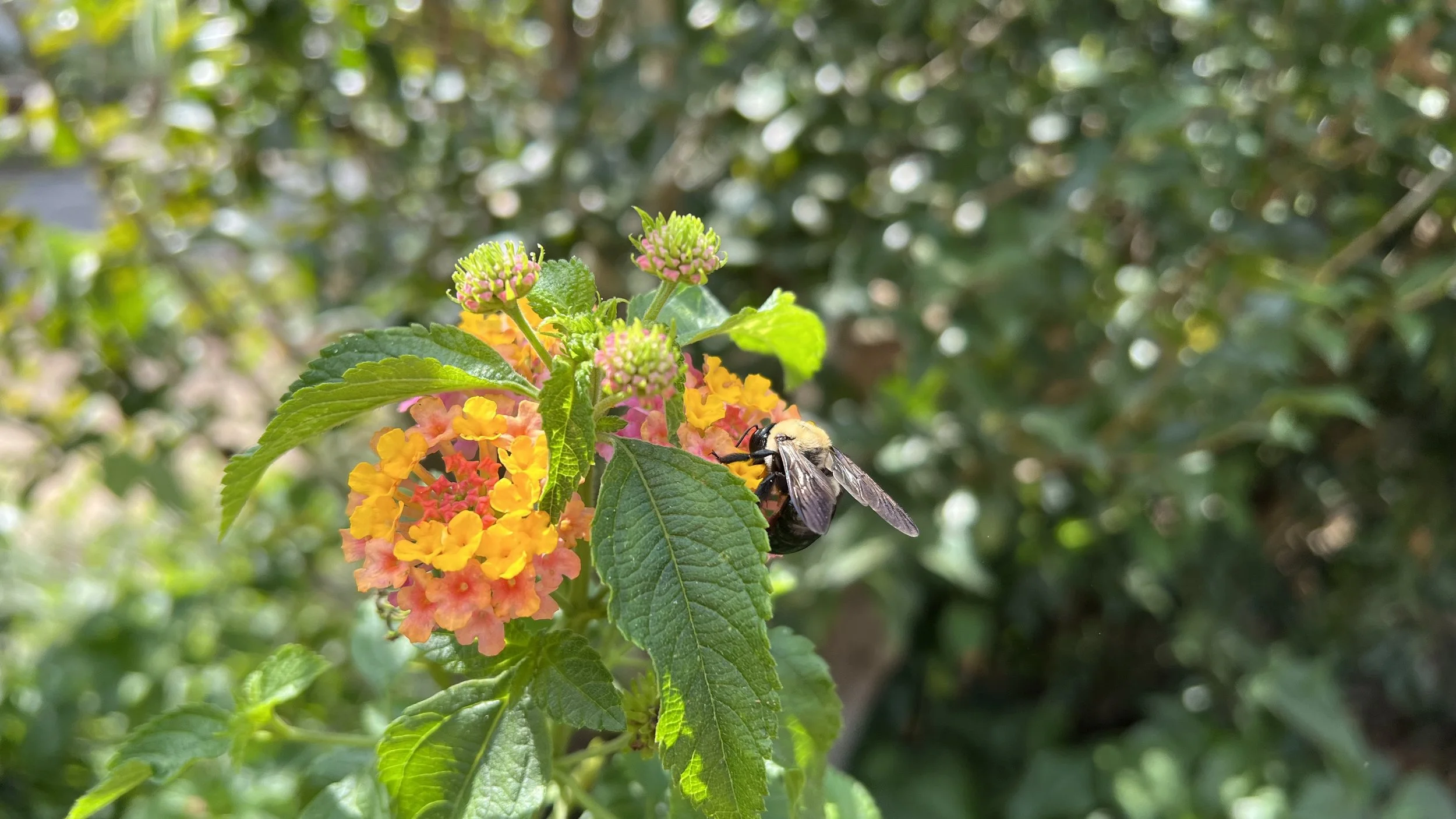Here are some of the plants you will find in bloom this month at the Elizabeth Lawrence House & Garden.
75 Years of this Southern Garden & violet crocuses
This year, 2024, marks the 75th anniversary of the Elizabeth Lawrence House & Garden! To celebrate, we are highlighting some of our favorite snippets of Elizabeth’s writings, plants, personal items, and a few other new-to-us discoveries along the way.
This installment features a passage I came across while searching her book Gardens in Winter (1977, Claitor’s Publishing), now long out of print.
“The violet crocuses are my favorites, and I wish I had room for wide pools of violet instead of small clumps stuffed into the borders or crowded in with the daffodils…”
As I wander Elizabeth’s garden in winter, the smiling faces of crocus are some of the first of the little bulbs to greet me. A couple of the ones that have stayed here the longest are Crocus laevigatus ‘Fontenayi’ and Crocus tommasinianus.
Dark purple feathering on the outside petals and white anthers give away the identity of Crocus laevigatus ‘Fontenayi’ .
Unfailingly, there is a patch of Crocus laevigatus ‘Fontenayi’ in front of the house that blooms first: usually sometime in December. These bulbs are some of the tiniest treasures of this place, as they are original to Elizabeth, and were planted in 1955! The earliest blooming date I have in my records, which date back to 2010, is November 25th. The earliest date in Elizabeth’s records: November 15.
Pockets of Crocus tommasinianus have been returned to various nooks and tucked into unexpected spaces throughout Elizabeth Lawrence’s garden.
Crocus tommasinianus is a later bloomer. These usually begin in early February. The earliest date I have is January 16. They are tucked in here and there throughout the garden, and have apparently even seeded about in a couple of spots, escaping the confines of planting beds. The largest display of tommies, as they’re commonly called, is in the northwest bed by the pool. They have seeded themselves in amongst Elizabeth’s natal lily, Crinum moorei var. schmidtii, which is as smart as it is efficient; when the crocus begin to die down, the crinum is waking up, and when the crinum has died down for the winter, the crocus come out. This type of seasonal inter-planting is a hallmark of the brilliant and skilled gardener that Elizabeth Lawrence was.
Tommies brighten this corner bed near the pool, and play an important part in seasonal planting.
Fontenay’s crocus is unfortunately not very widely available. As a matter of fact, the only place I find it currently—at least in the United States—is Brent & Becky’s Bulbs. Tommies, on the other hand, are fairly readily available. Both should be planted in the fall.
What's Blooming: February 2024
What's Blooming: January 2024
What's Blooming: October 2023
What's Blooming: September 2023
What's Blooming: August 2023
Some Like It Hot
One thing I can tell you with all certainty is that this gardener does not like it hot. When I stepped out into Elizabeth Lawrence’s garden this morning at 8:15, the thermometer read 79F. That alone wouldn’t be bad, but add in 85% humidity, and that’s enough to drive me back indoors. Well, not right back indoors…
What's Blooming: July 2023
Surprise Discoveries
Two weeks ago, volunteers and I dismantled the rotting wooden privacy fence along the west side of the Elizabeth Lawrence House & Garden, to make way for new fencing to be installed this week. Doing the demolition in-house gave me the opportunity to get out the metal detectors (thanks, Ellen & Bill Archer!), and spend some quality time combing the property line for any original plant tags. …
What's Blooming: June 2023
What's Blooming: May 2023
What's Blooming: April 2023
What's Blooming: March 2023
What's Blooming: February 2023
What's Blooming: January 2023
Changing Seasons
What's Blooming: October 2022
Let's Walk and Talk Plants
This Thursday, October 6, from 4-5:30 is Imbibe & Inspire, our monthly tour of Elizabeth Lawrence’s garden. Some of the things you will see of interest this time may not surprise you, like the perennial sunflower, Helianthus angustifolius, and hardy blue ageratum, Conoclinium coelestinum. There may be a couple of things that may surprise you, like hardy cyclamen, Cyclamen hederifolium, and a tiny autumn-blooming daffodil, Narcissus obsoletus.

